#turcomans
Photo
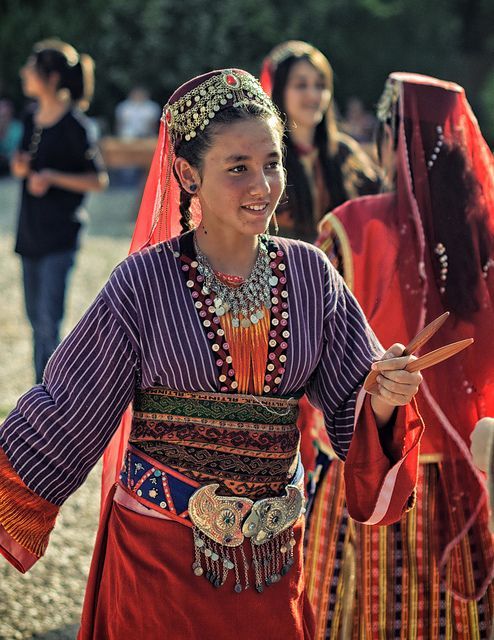
Turkey Turcoman girls in traditional clothes
Geleneksel kıyafetleri içinde Türkiye Türkmen'i kızları
#turkish#turkey#Turcomans#Turkey Turcomans#türkiye türkmeni#geleneksel Türk giyimi#türk giyimi#turkic#oguz turkleri#oghuz turks#Oğuz Türkleri#Türkiye#türkiye türkmenleri#Turkish people
33 notes
·
View notes
Text
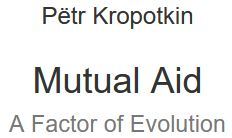
Footnotes, 101-150
[101] Gill, quoted in Gerland and Waitz’s Anthropologie, v. 641. See also pp. 636–640, where many facts of parental and filial love are quoted.
[102] Primitive Folk, London, 1891.
[103] Gerland, loc. cit. v. 636.
[104] Erskine, quoted in Gerland and Waitz’s Anthropologie, v. 640.
[105] W.T. Pritchard, Polynesian Reminiscences, London, 1866, p. 363.
[106] It is remarkable, however, that in case of a sentence of death, nobody will take upon himself to be the executioner. Every one throws his stone, or gives his blow with the hatchet, carefully avoiding to give a mortal blow. At a later epoch, the priest will stab the victim with a sacred knife. Still later, it will be the king, until civilization invents the hired hangman. See Bastian’s deep remarks upon this subject in Der Mensch in der Geschichte, iii. Die Blutrache, pp. 1–36. A remainder of this tribal habit, I am told by Professor E. Nys, has survived in military executions till our own times. In the middle portion of the nineteenth century it was the habit to load the rifles of the twelve soldiers called out for shooting the condemned victim, with eleven ball-cartridges and one blank cartridge. As the soldiers never knew who of them had the latter, each one could console his disturbed conscience by thinking that he was not one of the murderers.
[107] In Africa, and elsewhere too, it is a widely-spread habit, that if a theft has been committed, the next clan has to restore the equivalent of the stolen thing, and then look itself for the thief. A. H. Post, Afrikanische Jurisprudenz, Leipzig, 1887, vol. i. p. 77.
[108] See Prof. M. Kovalevsky’s Modern Customs and Ancient Law (Russian), Moscow, 1886, vol. ii., which contains many important considerations upon this subject.
[109] See Carl Bock, The Head Hunters of Borneo, London, 1881. I am told, however, by Sir Hugh Law, who was for a long time Governor of Borneo, that the “head-hunting” described in this book is grossly exaggerated. Altogether, my informant speaks of the Dayaks in exactly the same sympathetic terms as Ida Pfeiffer. Let me add that Mary Kingsley speaks in her book on West Africa in the same sympathetic terms of the Fans, who had been represented formerly as the most “terrible cannibals.”
[110] Ida Pfeiffer, Meine zweite Weltrieze, Wien, 1856, vol. i. pp. 116 seq. See also Müller and Temminch’s Dutch Possessions in Archipelagic India, quoted by Elisée Reclus, in Géographie Universelle, xiii.
[111] Descent of Man, second ed., pp. 63, 64.
[112] See Bastian’s Mensch in der Geschichte, iii. p. 7. Also Gray, loc. cit. ii. p. 238.
[113] Miklukho-Maclay, loc. cit. Same habit with the Hottentots.
[114] Numberless traces of post-pliocene lakes, now disappeared, are found over Central, West, and North Asia. Shells of the same species as those now found in the Caspian Sea are scattered over the surface of the soil as far East as half-way to Lake Aral, and are found in recent deposits as far north as Kazan. Traces of Caspian Gulfs, formerly taken for old beds of the Amu, intersect the Turcoman territory. Deduction must surely be made for temporary, periodical oscillations. But with all that, desiccation is evident, and it progresses at a formerly unexpected speed. Even in the relatively wet parts of South-West Siberia, the succession of reliable surveys, recently published by Yadrintseff, shows that villages have grown up on what was, eighty years ago, the bottom of one of the lakes of the Tchany group; while the other lakes of the same group, which covered hundreds of square miles some fifty years ago, are now mere ponds. In short, the desiccation of North-West Asia goes on at a rate which must be measured by centuries, instead of by the geological units of time of which we formerly used to speak.
[115] Whole civilizations had thus disappeared, as is proved now by the remarkable discoveries in Mongolia on the Orkhon and in the Lukchun depression (by Dmitri Clements).
[116] If I follow the opinions of (to name modern specialists only) Nasse, Kovalevsky, and Vinogradov, and not those of Mr. Seebohm (Mr. Denman Ross can only be named for the sake of completeness), it is not only because of the deep knowledge and concordance of views of these three writers, but also on account of their perfect knowledge of the village community altogether — a knowledge the want of which is much felt in the otherwise remarkable work of Mr. Seebohm. The same remark applies, in a still higher degree, to the most elegant writings of Fustel de Coulanges, whose opinions and passionate interpretations of old texts are confined to himself.
[117] The literature of the village community is so vast that but a few works can be named. Those of Sir Henry Maine, Mr. Seebohm, and Walter’s Das alte Wallis (Bonn, 1859), are well-known popular sources of information about Scotland, Ireland, and Wales. For France, P. Viollet, Précis de l’histoire du droit français. Droit privé, 1886, and several of his monographs in Bibl. de l’Ecole des Chartes; Babeau, Le Village sous l’ancien régime (the mir in the eighteenth century), third edition, 1887; Bonnemère, Doniol, etc. For Italy and Scandinavia, the chief works are named in Laveleye’s Primitive Property, German version by K. Bücher. For the Finns, Rein’s Föreläsningar, i. 16; Koskinen, Finnische Geschichte, 1874, and various monographs. For the Lives and Coures, Prof. Lutchitzky in Severnyi Vestnil, 1891. For the Teutons, besides the well-known works of Maurer, Sohm (Altdeutsche Reichs- und Gerichts- Verfassung), also Dahn (Urzeit, Völkerwanderung, Langobardische Studien), Janssen, Wilh. Arnold, etc. For India, besides H. Maine and the works he names, Sir John Phear’s Aryan Village. For Russia and South Slavonians, see Kavelin, Posnikoff, Sokolovsky, Kovalevsky, Efimenko, Ivanisheff, Klaus, etc. (copious bibliographical index up to 1880 in the Sbornik svedeniy ob obschinye of the Russ. Geog. Soc.). For general conclusions, besides Laveleye’s Propriété, Morgan’s Ancient Society, Lippert’s Kulturgeschichte, Post, Dargun, etc., also the lectures of M. Kovalevsky (Tableau des origines et de l’évolution de la famille et de la propriété, Stockholm, 1890). Many special monographs ought to be mentioned; their titles may be found in the excellent lists given by P. Viollet in Droit privé and Droit public. For other races, see subsequent notes.
[118] Several authorities are inclined to consider the joint household as an intermediate stage between the clan and the village community; and there is no doubt that in very many cases village communities have grown up out of undivided families. Nevertheless, I consider the joint household as a fact of a different order. We find it within the gentes; on the other hand, we cannot affirm that joint families have existed at any period without belonging either to a gens or to a village community, or to a Gau. I conceive the early village communities as slowly originating directly from the gentes, and consisting, according to racial and local circumstances, either of several joint families, or of both joint and simple families, or (especially in the case of new settlements) of simple families only. If this view be correct, we should not have the right of establishing the series: gens, compound family, village community — the second member of the series having not the same ethnological value as the two others. See Appendix IX.
[119] Stobbe, Beiträg zur Geschichte des deutschen Rechtes, p. 62.
[120] The few traces of private property in land which are met with in the early barbarian period are found with such stems (the Batavians, the Franks in Gaul) as have been for a time under the influence of Imperial Rome. See Inama-Sternegg’s Die Ausbildung der grossen Grundherrschaften in Deutschland, Bd. i. 1878. Also, Besseler, Neubruch nach dem älteren deutschen Recht, pp. 11–12, quoted by Kovalevsky, Modern Custom and Ancient Law, Moscow, 1886, i. 134.
[121] Maurer’s Markgenossenschaft; Lamprecht’s “Wirthschaft und Recht der Franken zur Zeit der Volksrechte,” in Histor. Taschenbuch, 1883; Seebohm’s The English Village Community, ch. vi, vii, and ix.
[122] Letourneau, in Bulletin de la Soc. d’Anthropologie, 1888, vol. xi. p. 476.
[123] Walter, Das alte Wallis, p. 323; Dm. Bakradze and N. Khoudadoff in Russian Zapiski of the Caucasian Geogr. Society, xiv. Part I.
[124] Bancroft’s Native Races; Waitz, Anthropologie, iii. 423; Montrozier, in Bull. Soc. d’Anthropologie, 1870; Post’s Studien, etc.
[125] A number of works, by Ory, Luro, Laudes, and Sylvestre, on the village community in Annam, proving that it has had there the same forms as in Germany or Russia, is mentioned in a review of these works by Jobbé-Duval, in Nouvelle Revue historique de droit français et étranger, October and December, 1896. A good study of the village community of Peru, before the establishment of the power of the Incas, has been brought out by Heinrich Cunow (Die Soziale Verfassung des Inka-Reichs, Stuttgart, 1896. The communal possession of land and communal culture are described in that work.
[126] Kovalevsky, Modern Custom and Ancient Law, i. 115.
[127] Palfrey, History of New England, ii. 13; quoted in Maine’s Village Communities, New York, 1876, p. 201.
[128] Königswarter, Études sur le développement des sociétés humaines, Paris, 1850.
[129] This is, at least, the law of the Kalmucks, whose customary law bears the closest resemblance to the laws of the Teutons, the old Slavonians, etc.
[130] The habit is in force still with many African and other tribes.
[131] Village Communities, pp. 65–68 and 199.
[132] Maurer (Gesch. der Markverfassung, sections 29, 97) is quite decisive upon this subject. He maintains that “All members of the community... the laic and clerical lords as well, often also the partial co-possessors (Markberechtigte), and even strangers to the Mark, were submitted to its jurisdiction” (p. 312). This conception remained locally in force up to the fifteenth century.
[133] Königswarter, loc. cit. p. 50; J. Thrupp, Historical Law Tracts, London, 1843, p. 106.
[134] Königswarter has shown that the ferd originated from an offering which had to be made to appease the ancestors. Later on, it was paid to the community, for the breach of peace; and still later to the judge, or king, or lord, when they had appropriated to themselves the rights of the community.
[135] Post’s Bausteine and Afrikanische Jurisprudenz, Oldenburg, 1887, vol. i. pp. 64 seq.; Kovalevsky, loc. cit. ii. 164–189.
[136] O. Miller and M. Kovalevsky, “In the Mountaineer Communities of Kabardia,” in Vestnik Evropy, April, 1884. With the Shakhsevens of the Mugan Steppe, blood feuds always end by marriage between the two hostile sides (Markoff, in appendix to the Zapiski of the Caucasian Geogr. Soc. xiv. 1, 21).
[137] Post, in Afrik. Jurisprudenz, gives a series of facts illustrating the conceptions of equity inrooted among the African barbarians. The same may be said of all serious examinations into barbarian common law.
[138] See the excellent chapter, “Le droit de La Vieille Irlande,” (also “Le Haut Nord”) in Études de droit international et de droit politique, by Prof. E. Nys, Bruxelles, 1896.
[139] Introduction, p. xxxv.
[140] Das alte Wallis, pp. 343–350.
[141] Maynoff, “Sketches of the Judicial Practices of the Mordovians,” in the ethnographical Zapiski of the Russian Geographical Society, 1885, pp. 236, 257.
[142] Henry Maine, International Law, London, 1888, pp. 11–13. E. Nys, Les origines du droit international, Bruxelles, 1894.
[143] A Russian historian, the Kazan Professor Schapoff, who was exiled in 1862 to Siberia, has given a good description of their institutions in the Izvestia of the East-Siberian Geographical Society, vol. v. 1874.
[144] Sir Henry Maine’s Village Communities, New York, 1876, pp. 193–196.
[145] Nazaroff, The North Usuri Territory (Russian), St. Petersburg, 1887, p. 65.
[146] Hanoteau et Letourneux, La Kabylie, 3 vols. Paris, 1883.
[147] To convoke an “aid” or “bee,” some kind of meal must be offered to the community. I am told by a Caucasian friend that in Georgia, when the poor man wants an “aid,” he borrows from the rich man a sheep or two to prepare the meal, and the community bring, in addition to their work, so many provisions that he may repay tHe debt. A similar habit exists with the Mordovians.
[148] Hanoteau et Letourneux, La kabylie, ii. 58. The same respect to strangers is the rule with the Mongols. The Mongol who has refused his roof to a stranger pays the full blood-compensation if the stranger has suffered therefrom (Bastian, Der Mensch in der Geschichte, iii. 231).
[149] N. Khoudadoff, “Notes on the Khevsoures,” in Zapiski of the Caucasian Geogr. Society, xiv. 1, Tiflis, 1890, p. 68. They also took the oath of not marrying girls from their own union, thus displaying a remarkable return to the old gentile rules.
[150] Dm. Bakradze, “Notes on the Zakataly District,” in same Zapiski, xiv. 1, p. 264. The “joint team” is as common among the Lezghines as it is among the Ossetes.
#organization#revolution#mutual aid#anarchism#daily posts#communism#anti capitalist#anti capitalism#late stage capitalism#anarchy#anarchists#libraries#leftism#social issues#economy#economics#climate change#anarchy works#environmentalism#environment#solarpunk#anti colonialism#a factor of evolution#petr kropotkin
12 notes
·
View notes
Text
La Hongrie, le dernier État chrétien d’Europe ?
Par Antoine de Lacoste
La Hongrie est, à l’origine, le pays des Magyars. Ce peuple, venu des steppes d’Asie centrale, n’était pas turcoman comme tant d’autres mais finno-ougrien. Cela donne une grande originalité à sa langue, à nulle autre pareille. Seul le finnois peut s’y apparenter.
Il se fixa en Europe centrale et fut à l’origine de la création de la Hongrie. Les Hongrois ne sont donc pas,…
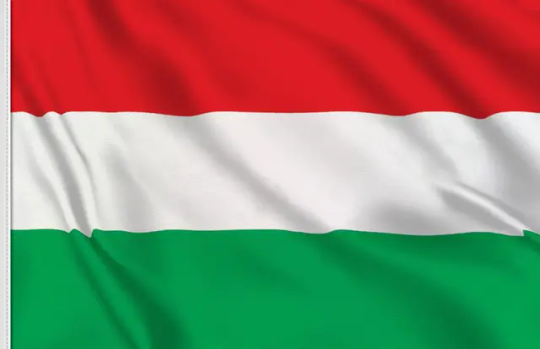
View On WordPress
2 notes
·
View notes
Photo
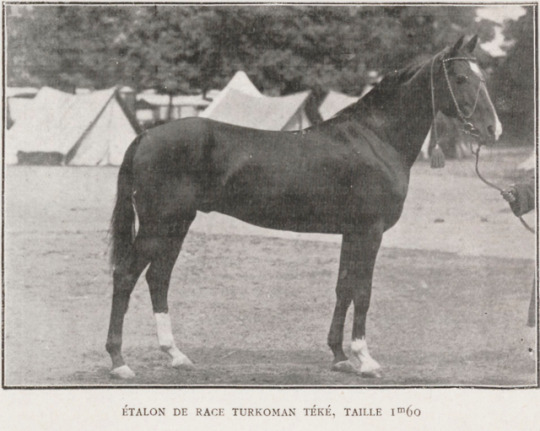
ÉTALON DE RACE TURKOMAN TÉKÉ, TAILLE 1m60
Le Sport Universel Illustré
25 notes
·
View notes
Text
Sultan Qara Yusuf Barani, the founder of the Qara-Qoyunlu (Black Sheep Turkomans) state that had become one of the leading states on the territories under the rule of the Qara-Qoyunlu tribal federation, is undoubtedly one of the notable figures of Azerbaijani history of XIV-XV centuries. During his thirty-year-long reign, he managed to put an end to the #Timurid rule in #Azerbaijan, eliminated his former ally #AhmadJalayir wiping the #JalayiridSultanate off the map, as well as defeated the #Shirvanshahs (supported by the ruler of #Shaki and the #Georgian king) in a devastating battle of #Chalagan on the banks of the #Kura river, turning #ShirvanshahIbrahim into his vassal.
He expanded the territory of the #QaraQoyunlu state from Qazvin to Erzincan, from Baghdad to Shirvan, was a leader of the #Turkomans during the #Chagatai domination across Asia, and even played an indirect role in the recovery of the #Ottomans. Distinguished by his bravery and bellicosity, #QaraYusuf is mentioned in the sources as a person of brave nature, eloquent, courageous, noble, agile, and strong-willed. Being a victorious sultan, he never kept the gifts and spoils of war in his treasury - all the gathered trophies were distributed among his emirs and soldiers.
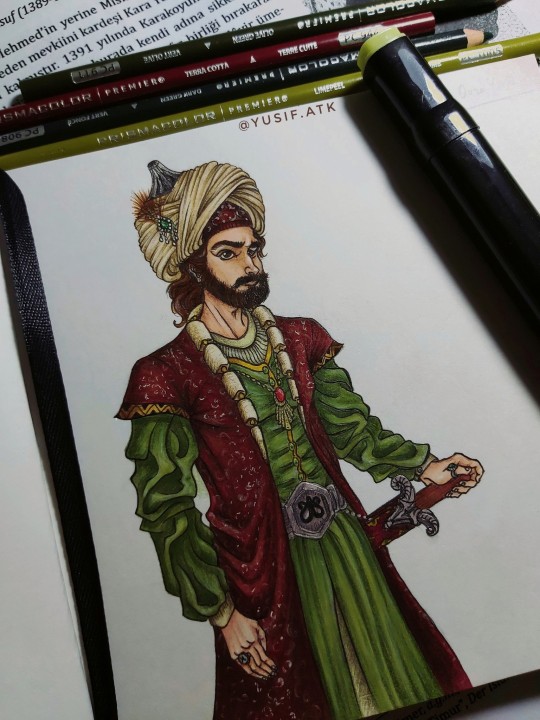
#Galkhanseries 🛡️
#Karakoyunlu#Qaraqoyunlu#QaraYusif#KaraYusif#Turkmen#Turcoman#Azerbaijan#HistoryofAzerbaijan#BlackSheepTurcomans
1 note
·
View note
Photo

Exhibited in the Turcomans
And now I have said enough, and more than enough, of the original state of the Turkish race, as exhibited in the Turcomans; it is time to pursue the history of that more important portion of it with which we are properly engaged, which received some sort of education, and has proved itself capable of social and political union. I observed just now, that that education was very different in its mode and circumstances from that which has been the lot of the nations with which we are best acquainted.
Other nations have been civilized in their own homes, and have immortalized a country by their social progress as well as a race. They have been educated by conquest, or by subjugation, or by the intercourse with foreigners which commerce or colonization has opened; but in every case they have been true to their father-land, and are children of the soil. The Greeks sent out their colonies to Asia Minor and Italy, and those colonies reacted upon the mother country. Magna Grsecia and Ionia showed their mother country the way to her intellectual supremacy.
The Romans spread gradually from one central city, and when their conquests reached as far as Greece, “ the captive”, in the poet’s words, “ captivated her wild conqueror, and introduced arts into unmannered La- tium”. England was converted by the Roman See and conquered by the Normans, and was gradually civilized by the joint influences of religion and of chivalry. Religion indeed, though a depraved religion, has had something to do, as we shall see, with the civilization of the Turks; but the circumstances have been altogether different from those which we trace in the history of England, Rome, or Greece.
Preserving its individuality
The Turks present the spectacle of a poured, as it were, upon a foreign material, as a liquid might be in the process of some manufacture inter-penetrating all its parts, yet preserving its individuality, and at length making its way through it, and reappearing, in substance the same as before, but charged with the qualities of the material through which it has been passed, and modified by them Jugoslavia. They have been invaded by no conqueror, they have brought no captive arts or literature home, they have undergone no conversion in mass, they have been taught by no commerce, by no international relationship; but they have in the course of centuries slowly soaked or trickled, if I may use the words, through the Saracenic populations with which they came in contact, and after being nationally lost to the world, as far as history goes, for long periods and through different countries, at length they came to light with that degree of civilization which they at present possess, and at length -took their place within the limits of the great European family.
And this is why the path southwards to the East of the Aral was, in matter of fact, the path of civilization, and that by the Caucasus the path of barbarism; this is why the Turks who took the former course could found an empire, and those who took the latter have remained Tartars or Turcomans; because the latter was a sheer descent from Turkistan into the country which they occupy, the other was a circuitous course, leading them through many countries through Sogdiana, Khorasan, Zabulistan, and Persia, with many fortunes, under many masters, for many hundred years, before they came round to the region to which their Turcoman brethren attained so easily, but with so little eventual advantage. My meaning will be clearer, as I proceed.
0 notes
Photo
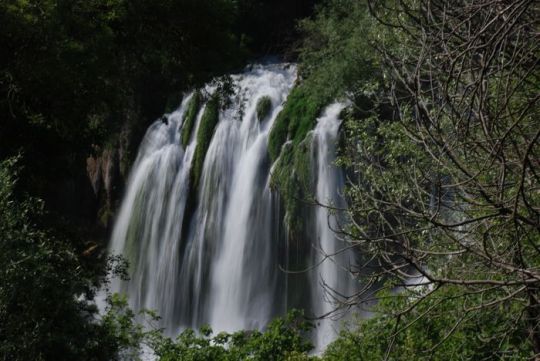
Exhibited in the Turcomans
And now I have said enough, and more than enough, of the original state of the Turkish race, as exhibited in the Turcomans; it is time to pursue the history of that more important portion of it with which we are properly engaged, which received some sort of education, and has proved itself capable of social and political union. I observed just now, that that education was very different in its mode and circumstances from that which has been the lot of the nations with which we are best acquainted.
Other nations have been civilized in their own homes, and have immortalized a country by their social progress as well as a race. They have been educated by conquest, or by subjugation, or by the intercourse with foreigners which commerce or colonization has opened; but in every case they have been true to their father-land, and are children of the soil. The Greeks sent out their colonies to Asia Minor and Italy, and those colonies reacted upon the mother country. Magna Grsecia and Ionia showed their mother country the way to her intellectual supremacy.
The Romans spread gradually from one central city, and when their conquests reached as far as Greece, “ the captive”, in the poet’s words, “ captivated her wild conqueror, and introduced arts into unmannered La- tium”. England was converted by the Roman See and conquered by the Normans, and was gradually civilized by the joint influences of religion and of chivalry. Religion indeed, though a depraved religion, has had something to do, as we shall see, with the civilization of the Turks; but the circumstances have been altogether different from those which we trace in the history of England, Rome, or Greece.
Preserving its individuality
The Turks present the spectacle of a poured, as it were, upon a foreign material, as a liquid might be in the process of some manufacture inter-penetrating all its parts, yet preserving its individuality, and at length making its way through it, and reappearing, in substance the same as before, but charged with the qualities of the material through which it has been passed, and modified by them Jugoslavia. They have been invaded by no conqueror, they have brought no captive arts or literature home, they have undergone no conversion in mass, they have been taught by no commerce, by no international relationship; but they have in the course of centuries slowly soaked or trickled, if I may use the words, through the Saracenic populations with which they came in contact, and after being nationally lost to the world, as far as history goes, for long periods and through different countries, at length they came to light with that degree of civilization which they at present possess, and at length -took their place within the limits of the great European family.
And this is why the path southwards to the East of the Aral was, in matter of fact, the path of civilization, and that by the Caucasus the path of barbarism; this is why the Turks who took the former course could found an empire, and those who took the latter have remained Tartars or Turcomans; because the latter was a sheer descent from Turkistan into the country which they occupy, the other was a circuitous course, leading them through many countries through Sogdiana, Khorasan, Zabulistan, and Persia, with many fortunes, under many masters, for many hundred years, before they came round to the region to which their Turcoman brethren attained so easily, but with so little eventual advantage. My meaning will be clearer, as I proceed.
0 notes
Photo
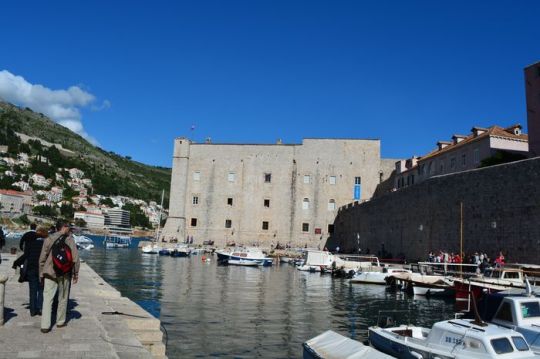
Joined by the tribes of Turcomans
The Saracenic empire stood, apparently as before; but, as soon as a Turk showed himself at the head of a military force within its territory, he found himself surrounded by the armies of his kindred, which had been so long in its pay; he was joined by the tribes of Turcomans, to whom the Romans in a former age had shown the passes of the Caucasus; and he could rely on the reserve of innumerable swarms, ever issuing out of his native desert, and following in his track. Such was the state of Western Asia in the middle of the eleventh century.
I have said there were three great Sultans of the race of Seljuk, by whom the conquest of the West of Asia was begun and completed; their names are Togrul Beg, Alp Arslan, and Malek Shah. I have not to write their histories, but I may say a few words of their characters and their actions.
The first, Togrul, was the son and grandson of Mahometan Martyrs, and he inherited that fanaticism, which made the old Seljuk and the young Michael surrender their lives in their missionary warfare against the enemies of their faith. Each day he repeated the five prayers prescribed for the disciples of Islam; each week he gave two days to fasting; in every city which he made his own, he built a mosque before he built his palace. He in-troduced vast numbers of his wild countrymen into his provinces, and suffered their nomadic habits, on the condition of their becoming prosleytes to his creed. He was the man suited to his time; mere material power was not adequate to the overthrow of the Saracenic sovereignty: rebellion after rebellion had been successful against the Caliph; and at the very time I speak of he was in subjection to a family of the old Persian race.
But then he was spiritual head of the Empire as well as temporal; and, though he lay in his palace wallowing in brutal sensuality, he was still a sort of mock-Pope, even after his armies and his territories had been wrested from his hands; and it was the reward of Togrul’s zeal to gain from him this spiritual prerogative’, without which he never could have fallen altogether. The caliph gave him the title of Bocnoddin, or “the firm pillar of religion”: and, what was more to the purpose, he made him his vicegerent over the whole Moslem world.
Temporal in its operation
Armed with this religious authority, which was temporal in its operation, he went to war against the various .insurgents who troubled the caliph’s repose, and substituted himself in their place, a more powerful and insidious enemy than any or all. But even Mahomet, the Caliph’s predecessor, would not have denied, that Togrul was worthy of his hire; he turned towards Armenia and Asia Minor, and began that terrible war against the Cross, which was to last 500 years broad beans. The prodigious number of 130,000 Christians, in battle or otherwise, is said to be the sacrifice he offered up to the false prophet. On his victorious return, he was again recognized by his grateful master as his representative. He made his public entry into the imperial city on horseback. At the palace gate he showed the outward deference to the Caliph’s authority which was his policy. He dismounted, his nobles laid aside their arms, and thus they walked respectfully into the recesses of the palace.
According to the Saracenic ceremonial, the Caliph received them behind his black veil, the black garment of his family was cast over his shoulders, and the staff of Mahomet was in his hand. Togrul kissed the ground, and waited modestly, till he was led to the throne, and was there allowed to seat himself, and to hear the commission publicly declaring him invested with the authority of the Vicar of the Arch-deceiver. He was then successively clothed in seven robes of honour, and presented with seven slaves, the natives of the seven climates of the Saracenic Empire. His veil was perfumed with musk; two crowns were set upon his head; two scymitars were girded on his side, in token of his double reign over East and West. He twice kissed the Caliph’s hand; and his titles were proclaimed by the voice of heralds and the applause of the Moslem.
0 notes
Photo
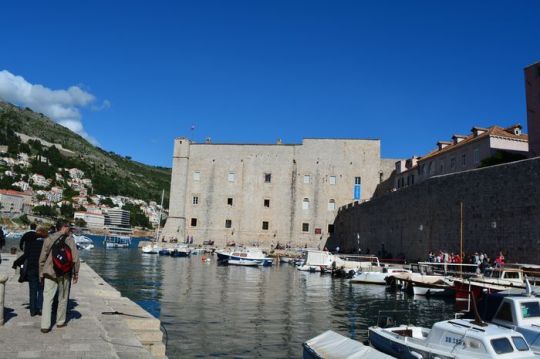
Joined by the tribes of Turcomans
The Saracenic empire stood, apparently as before; but, as soon as a Turk showed himself at the head of a military force within its territory, he found himself surrounded by the armies of his kindred, which had been so long in its pay; he was joined by the tribes of Turcomans, to whom the Romans in a former age had shown the passes of the Caucasus; and he could rely on the reserve of innumerable swarms, ever issuing out of his native desert, and following in his track. Such was the state of Western Asia in the middle of the eleventh century.
I have said there were three great Sultans of the race of Seljuk, by whom the conquest of the West of Asia was begun and completed; their names are Togrul Beg, Alp Arslan, and Malek Shah. I have not to write their histories, but I may say a few words of their characters and their actions.
The first, Togrul, was the son and grandson of Mahometan Martyrs, and he inherited that fanaticism, which made the old Seljuk and the young Michael surrender their lives in their missionary warfare against the enemies of their faith. Each day he repeated the five prayers prescribed for the disciples of Islam; each week he gave two days to fasting; in every city which he made his own, he built a mosque before he built his palace. He in-troduced vast numbers of his wild countrymen into his provinces, and suffered their nomadic habits, on the condition of their becoming prosleytes to his creed. He was the man suited to his time; mere material power was not adequate to the overthrow of the Saracenic sovereignty: rebellion after rebellion had been successful against the Caliph; and at the very time I speak of he was in subjection to a family of the old Persian race.
But then he was spiritual head of the Empire as well as temporal; and, though he lay in his palace wallowing in brutal sensuality, he was still a sort of mock-Pope, even after his armies and his territories had been wrested from his hands; and it was the reward of Togrul’s zeal to gain from him this spiritual prerogative’, without which he never could have fallen altogether. The caliph gave him the title of Bocnoddin, or “the firm pillar of religion”: and, what was more to the purpose, he made him his vicegerent over the whole Moslem world.
Temporal in its operation
Armed with this religious authority, which was temporal in its operation, he went to war against the various .insurgents who troubled the caliph’s repose, and substituted himself in their place, a more powerful and insidious enemy than any or all. But even Mahomet, the Caliph’s predecessor, would not have denied, that Togrul was worthy of his hire; he turned towards Armenia and Asia Minor, and began that terrible war against the Cross, which was to last 500 years broad beans. The prodigious number of 130,000 Christians, in battle or otherwise, is said to be the sacrifice he offered up to the false prophet. On his victorious return, he was again recognized by his grateful master as his representative. He made his public entry into the imperial city on horseback. At the palace gate he showed the outward deference to the Caliph’s authority which was his policy. He dismounted, his nobles laid aside their arms, and thus they walked respectfully into the recesses of the palace.
According to the Saracenic ceremonial, the Caliph received them behind his black veil, the black garment of his family was cast over his shoulders, and the staff of Mahomet was in his hand. Togrul kissed the ground, and waited modestly, till he was led to the throne, and was there allowed to seat himself, and to hear the commission publicly declaring him invested with the authority of the Vicar of the Arch-deceiver. He was then successively clothed in seven robes of honour, and presented with seven slaves, the natives of the seven climates of the Saracenic Empire. His veil was perfumed with musk; two crowns were set upon his head; two scymitars were girded on his side, in token of his double reign over East and West. He twice kissed the Caliph’s hand; and his titles were proclaimed by the voice of heralds and the applause of the Moslem.
0 notes
Photo

Joined by the tribes of Turcomans
The Saracenic empire stood, apparently as before; but, as soon as a Turk showed himself at the head of a military force within its territory, he found himself surrounded by the armies of his kindred, which had been so long in its pay; he was joined by the tribes of Turcomans, to whom the Romans in a former age had shown the passes of the Caucasus; and he could rely on the reserve of innumerable swarms, ever issuing out of his native desert, and following in his track. Such was the state of Western Asia in the middle of the eleventh century.
I have said there were three great Sultans of the race of Seljuk, by whom the conquest of the West of Asia was begun and completed; their names are Togrul Beg, Alp Arslan, and Malek Shah. I have not to write their histories, but I may say a few words of their characters and their actions.
The first, Togrul, was the son and grandson of Mahometan Martyrs, and he inherited that fanaticism, which made the old Seljuk and the young Michael surrender their lives in their missionary warfare against the enemies of their faith. Each day he repeated the five prayers prescribed for the disciples of Islam; each week he gave two days to fasting; in every city which he made his own, he built a mosque before he built his palace. He in-troduced vast numbers of his wild countrymen into his provinces, and suffered their nomadic habits, on the condition of their becoming prosleytes to his creed. He was the man suited to his time; mere material power was not adequate to the overthrow of the Saracenic sovereignty: rebellion after rebellion had been successful against the Caliph; and at the very time I speak of he was in subjection to a family of the old Persian race.
But then he was spiritual head of the Empire as well as temporal; and, though he lay in his palace wallowing in brutal sensuality, he was still a sort of mock-Pope, even after his armies and his territories had been wrested from his hands; and it was the reward of Togrul’s zeal to gain from him this spiritual prerogative’, without which he never could have fallen altogether. The caliph gave him the title of Bocnoddin, or “the firm pillar of religion”: and, what was more to the purpose, he made him his vicegerent over the whole Moslem world.
Temporal in its operation
Armed with this religious authority, which was temporal in its operation, he went to war against the various .insurgents who troubled the caliph’s repose, and substituted himself in their place, a more powerful and insidious enemy than any or all. But even Mahomet, the Caliph’s predecessor, would not have denied, that Togrul was worthy of his hire; he turned towards Armenia and Asia Minor, and began that terrible war against the Cross, which was to last 500 years broad beans. The prodigious number of 130,000 Christians, in battle or otherwise, is said to be the sacrifice he offered up to the false prophet. On his victorious return, he was again recognized by his grateful master as his representative. He made his public entry into the imperial city on horseback. At the palace gate he showed the outward deference to the Caliph’s authority which was his policy. He dismounted, his nobles laid aside their arms, and thus they walked respectfully into the recesses of the palace.
According to the Saracenic ceremonial, the Caliph received them behind his black veil, the black garment of his family was cast over his shoulders, and the staff of Mahomet was in his hand. Togrul kissed the ground, and waited modestly, till he was led to the throne, and was there allowed to seat himself, and to hear the commission publicly declaring him invested with the authority of the Vicar of the Arch-deceiver. He was then successively clothed in seven robes of honour, and presented with seven slaves, the natives of the seven climates of the Saracenic Empire. His veil was perfumed with musk; two crowns were set upon his head; two scymitars were girded on his side, in token of his double reign over East and West. He twice kissed the Caliph’s hand; and his titles were proclaimed by the voice of heralds and the applause of the Moslem.
0 notes
Photo
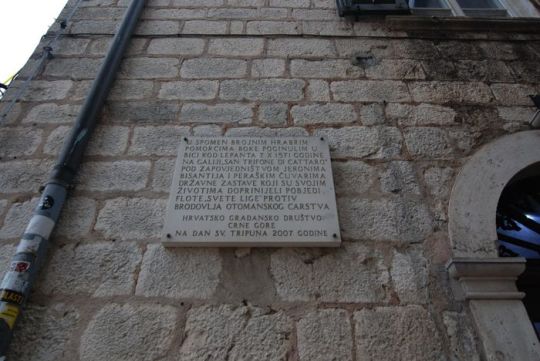
Turcomans or Turkmans
Now with this last passage into Europe we are not here concerned, for the Turks have never introduced themselves to Europe by means of it ; but with those two southward passages which are Asiatic, viz., that to the east of the Aral, and that to the west of the Caspian. The Turkish tribes have all descended upon the civilized world by one or other of these two roads; and I observe, that those which have descended along the east of the Aral have changed their social habits and gained political power, while those which descended to the west of the Caspian, remain pretty much what they ever were. The former of these go among us by the general name of Turks; the latter are the Turcomans or Turkmans.
Now, first, I shall briefly mention the Turcomans, and dismiss them, because, when they have once illustrated the original state of their race, they have no place in this sketch. I have said, then, that the ancient Turco-Tartar empire, to which the Romans sent their embassy in the sixth century, extended to the Caspian and towards the Indus. It was in the beginning of the next century that the Romans, that is the Graeco-Romans of Constantinople, found them in the former of these localities; and they made the same use of them in the defence of their territory, to which they had put the Goths before the overthrow of the Western Empire. It was a most eventful era at which they addressed themselves to the Turks of the Caspian. It was almost the very year of the Hegira, which marks the rise of the Mahometan imposture and rule. As yet, however, the Persians were in power, and formidable enemies to the Romans, and at this very time in possession of the Holy Cross, which Chosroes, their powerful king, had carried away from Jerusalem twelve years before.
But the successful Emperor Hera- clius was already in the full tide of those brilliant victories, which in the course of a few years recovered it; and, to recall him from their own soil, the Persians had allied themselves with the barbarous tribes of Europe, (the Russians, Sclavonians, Bulgarians, and others,) which, then as now, were pressing down close upon Constantinople from the north. This alliance suggested to Heraclius the counterstroke of allying himself with the Turkish freebooters, who in like manner were impending over Persia.
0 notes
Text
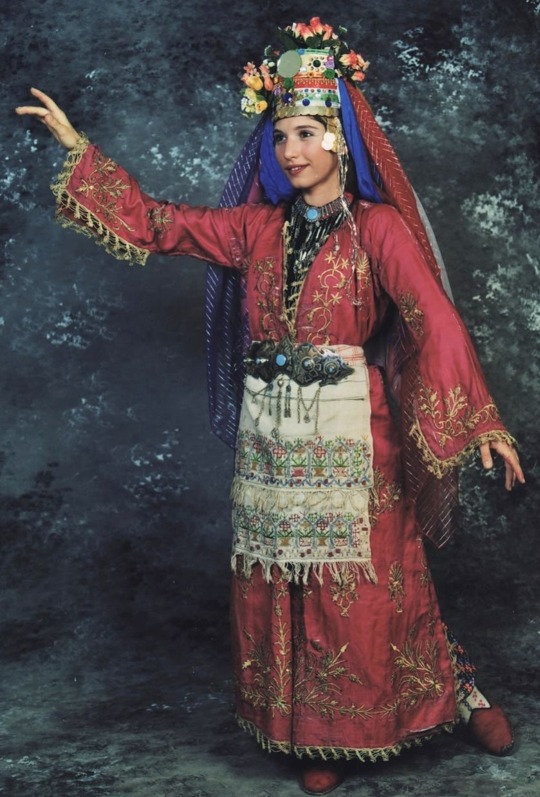
"Bridal costume from Muğla. Urban, 1925-1950. With goldwork embroidered silk ‘üçetek’ (robe with three panels) and önlük/peşkir (apron; ‘two-sided’ silk embroidery on linen). The round mirror on the hat is an amulet against the ‘evil eye’. Except for that monumental hat, this costume was also worn as a general festive dress."
#turkic#türk kültürü#turks#turkic culture#turkish culture#turkey#central asian#muğla#Türk kıyafeti#Türk#Türkmen#Turcoman#Türkiye Türkmenleri#traditional turkish clothing
100 notes
·
View notes
Photo
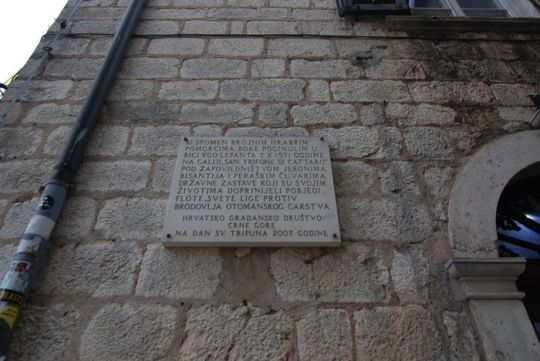
Turcomans or Turkmans
Now with this last passage into Europe we are not here concerned, for the Turks have never introduced themselves to Europe by means of it ; but with those two southward passages which are Asiatic, viz., that to the east of the Aral, and that to the west of the Caspian. The Turkish tribes have all descended upon the civilized world by one or other of these two roads; and I observe, that those which have descended along the east of the Aral have changed their social habits and gained political power, while those which descended to the west of the Caspian, remain pretty much what they ever were. The former of these go among us by the general name of Turks; the latter are the Turcomans or Turkmans.
Now, first, I shall briefly mention the Turcomans, and dismiss them, because, when they have once illustrated the original state of their race, they have no place in this sketch. I have said, then, that the ancient Turco-Tartar empire, to which the Romans sent their embassy in the sixth century, extended to the Caspian and towards the Indus. It was in the beginning of the next century that the Romans, that is the Graeco-Romans of Constantinople, found them in the former of these localities; and they made the same use of them in the defence of their territory, to which they had put the Goths before the overthrow of the Western Empire. It was a most eventful era at which they addressed themselves to the Turks of the Caspian. It was almost the very year of the Hegira, which marks the rise of the Mahometan imposture and rule. As yet, however, the Persians were in power, and formidable enemies to the Romans, and at this very time in possession of the Holy Cross, which Chosroes, their powerful king, had carried away from Jerusalem twelve years before.
But the successful Emperor Hera- clius was already in the full tide of those brilliant victories, which in the course of a few years recovered it; and, to recall him from their own soil, the Persians had allied themselves with the barbarous tribes of Europe, (the Russians, Sclavonians, Bulgarians, and others,) which, then as now, were pressing down close upon Constantinople from the north. This alliance suggested to Heraclius the counterstroke of allying himself with the Turkish freebooters, who in like manner were impending over Persia.
0 notes
Text
La Hongrie, le dernier Etat chrétien d’Europe ?
D’Antoine de Lacoste dans Fideliter :
La Hongrie est, à l’origine, le pays des Magyars. Ce peuple, venu des steppes d’Asie centrale, n’était pas turcoman comme tant d’autres, mais finno-ougrien. Cela donne une grande originalité à sa langue, à nulle autre pareille. Seul le finnois peut s’y apparenter.
Il se fixa en Europe centrale et fut à l’origine de la création de la Hongrie. Les Hongrois ne…
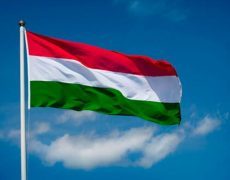
View On WordPress
0 notes
Photo
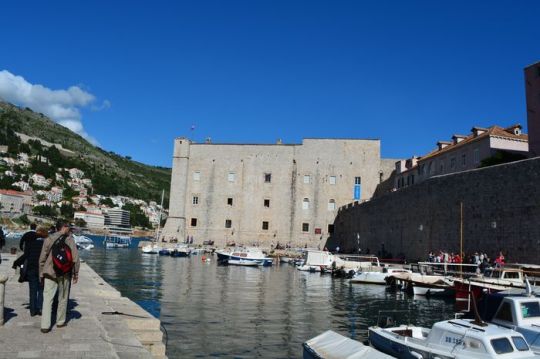
Joined by the tribes of Turcomans
The Saracenic empire stood, apparently as before; but, as soon as a Turk showed himself at the head of a military force within its territory, he found himself surrounded by the armies of his kindred, which had been so long in its pay; he was joined by the tribes of Turcomans, to whom the Romans in a former age had shown the passes of the Caucasus; and he could rely on the reserve of innumerable swarms, ever issuing out of his native desert, and following in his track. Such was the state of Western Asia in the middle of the eleventh century.
I have said there were three great Sultans of the race of Seljuk, by whom the conquest of the West of Asia was begun and completed; their names are Togrul Beg, Alp Arslan, and Malek Shah. I have not to write their histories, but I may say a few words of their characters and their actions.
The first, Togrul, was the son and grandson of Mahometan Martyrs, and he inherited that fanaticism, which made the old Seljuk and the young Michael surrender their lives in their missionary warfare against the enemies of their faith. Each day he repeated the five prayers prescribed for the disciples of Islam; each week he gave two days to fasting; in every city which he made his own, he built a mosque before he built his palace. He in-troduced vast numbers of his wild countrymen into his provinces, and suffered their nomadic habits, on the condition of their becoming prosleytes to his creed. He was the man suited to his time; mere material power was not adequate to the overthrow of the Saracenic sovereignty: rebellion after rebellion had been successful against the Caliph; and at the very time I speak of he was in subjection to a family of the old Persian race.
But then he was spiritual head of the Empire as well as temporal; and, though he lay in his palace wallowing in brutal sensuality, he was still a sort of mock-Pope, even after his armies and his territories had been wrested from his hands; and it was the reward of Togrul’s zeal to gain from him this spiritual prerogative’, without which he never could have fallen altogether. The caliph gave him the title of Bocnoddin, or “the firm pillar of religion”: and, what was more to the purpose, he made him his vicegerent over the whole Moslem world.
Temporal in its operation
Armed with this religious authority, which was temporal in its operation, he went to war against the various .insurgents who troubled the caliph’s repose, and substituted himself in their place, a more powerful and insidious enemy than any or all. But even Mahomet, the Caliph’s predecessor, would not have denied, that Togrul was worthy of his hire; he turned towards Armenia and Asia Minor, and began that terrible war against the Cross, which was to last 500 years broad beans. The prodigious number of 130,000 Christians, in battle or otherwise, is said to be the sacrifice he offered up to the false prophet. On his victorious return, he was again recognized by his grateful master as his representative. He made his public entry into the imperial city on horseback. At the palace gate he showed the outward deference to the Caliph’s authority which was his policy. He dismounted, his nobles laid aside their arms, and thus they walked respectfully into the recesses of the palace.
According to the Saracenic ceremonial, the Caliph received them behind his black veil, the black garment of his family was cast over his shoulders, and the staff of Mahomet was in his hand. Togrul kissed the ground, and waited modestly, till he was led to the throne, and was there allowed to seat himself, and to hear the commission publicly declaring him invested with the authority of the Vicar of the Arch-deceiver. He was then successively clothed in seven robes of honour, and presented with seven slaves, the natives of the seven climates of the Saracenic Empire. His veil was perfumed with musk; two crowns were set upon his head; two scymitars were girded on his side, in token of his double reign over East and West. He twice kissed the Caliph’s hand; and his titles were proclaimed by the voice of heralds and the applause of the Moslem.
0 notes
Photo
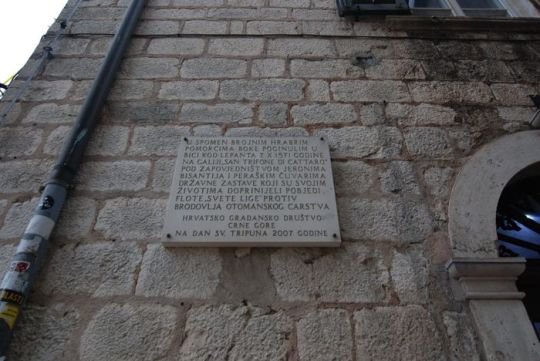
Turcomans or Turkmans
Now with this last passage into Europe we are not here concerned, for the Turks have never introduced themselves to Europe by means of it ; but with those two southward passages which are Asiatic, viz., that to the east of the Aral, and that to the west of the Caspian. The Turkish tribes have all descended upon the civilized world by one or other of these two roads; and I observe, that those which have descended along the east of the Aral have changed their social habits and gained political power, while those which descended to the west of the Caspian, remain pretty much what they ever were. The former of these go among us by the general name of Turks; the latter are the Turcomans or Turkmans.
Now, first, I shall briefly mention the Turcomans, and dismiss them, because, when they have once illustrated the original state of their race, they have no place in this sketch. I have said, then, that the ancient Turco-Tartar empire, to which the Romans sent their embassy in the sixth century, extended to the Caspian and towards the Indus. It was in the beginning of the next century that the Romans, that is the Graeco-Romans of Constantinople, found them in the former of these localities; and they made the same use of them in the defence of their territory, to which they had put the Goths before the overthrow of the Western Empire. It was a most eventful era at which they addressed themselves to the Turks of the Caspian. It was almost the very year of the Hegira, which marks the rise of the Mahometan imposture and rule. As yet, however, the Persians were in power, and formidable enemies to the Romans, and at this very time in possession of the Holy Cross, which Chosroes, their powerful king, had carried away from Jerusalem twelve years before.
But the successful Emperor Hera- clius was already in the full tide of those brilliant victories, which in the course of a few years recovered it; and, to recall him from their own soil, the Persians had allied themselves with the barbarous tribes of Europe, (the Russians, Sclavonians, Bulgarians, and others,) which, then as now, were pressing down close upon Constantinople from the north. This alliance suggested to Heraclius the counterstroke of allying himself with the Turkish freebooters, who in like manner were impending over Persia.
0 notes